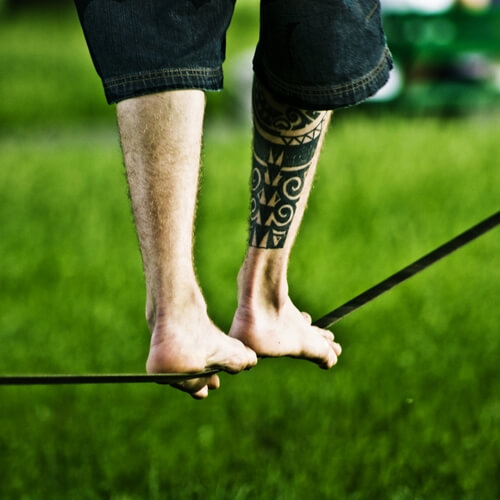News
Photo courtesy of Jakub Michankow.
The following is an excerpt from an article that appeared in ScienceNOW on April 18, 2012:
Life is a constant balancing act, especially if you're a tightrope walker. The best athletes make treading a circus high wire or a low-hanging slackline look effortless, but they're actually juggling complex challenges of perception and motor control. Now researchers have constructed a mathematical explanation of how such nimble acrobats remain upright. Their calculations point to a theoretical "sweet spot," or optimal conditions fora person to balance on a line with minimal effort. Such a model may help scientists better understand how the brain and body work together to pull off difficult tasks.
The study originated from a thought experiment, as researchers at Harvard University pondered the ultimate balancing challenge. Keeping steady on a stationary plank or beam is hard enough, but a rope adds the destabilizing element of motion. A rope not only sways but also moves in response to a person's movement, forcing the walker to constantly change position. In this shaky feedback loop, "small errors can be amplified very easily," says study author L. Mahadevan, an applied mathematician and scientist.
The researchers created a simple model of a person on a rope with forces, masses, angles, and velocities to describe how the rope and person respond to each other. They also considered the sensory systems that alert us when our bodies start to teeter, including our eyes, the organs of our inner ear,and orientation information from our ankles and knees. In their calculations, they suggest that rapid information about falling provided by the inner ear is sufficient to help a rope walker maintain his or her balance.
The team also discovered that a key feature affecting balance is the rope's sag. A tight rope with little sag makes quicker vibrations, whereas a loose rope with a lot of sag makes larger back-and-forth swings. Between these two challenging extremes exists a "sweet spot"—an optimal sag of about 3 feet where balancing is easiest, the researchers report online today in the Journal of the Royal Society Interface.
Read the full article in ScienceNOW here.
Topics: Applied Mathematics
Cutting-edge science delivered direct to your inbox.
Join the Harvard SEAS mailing list.



